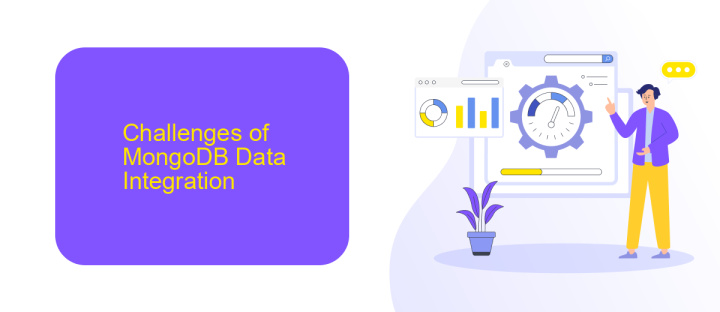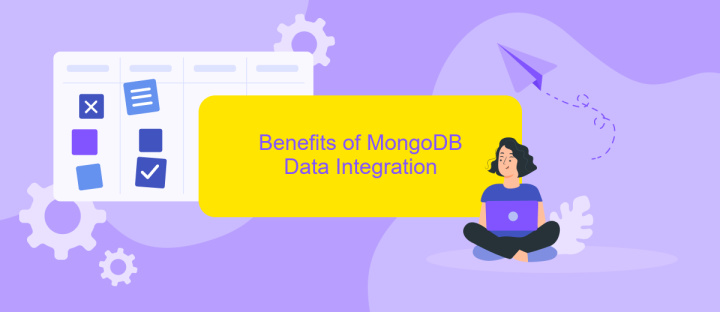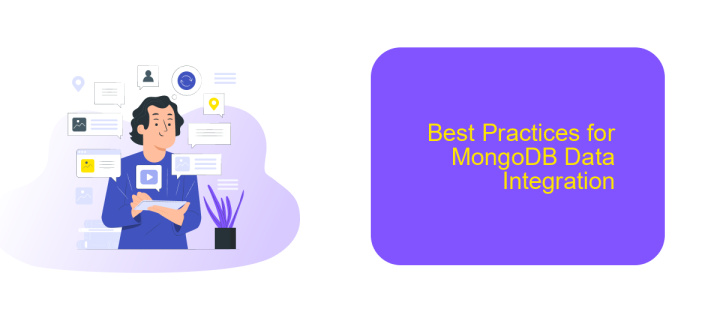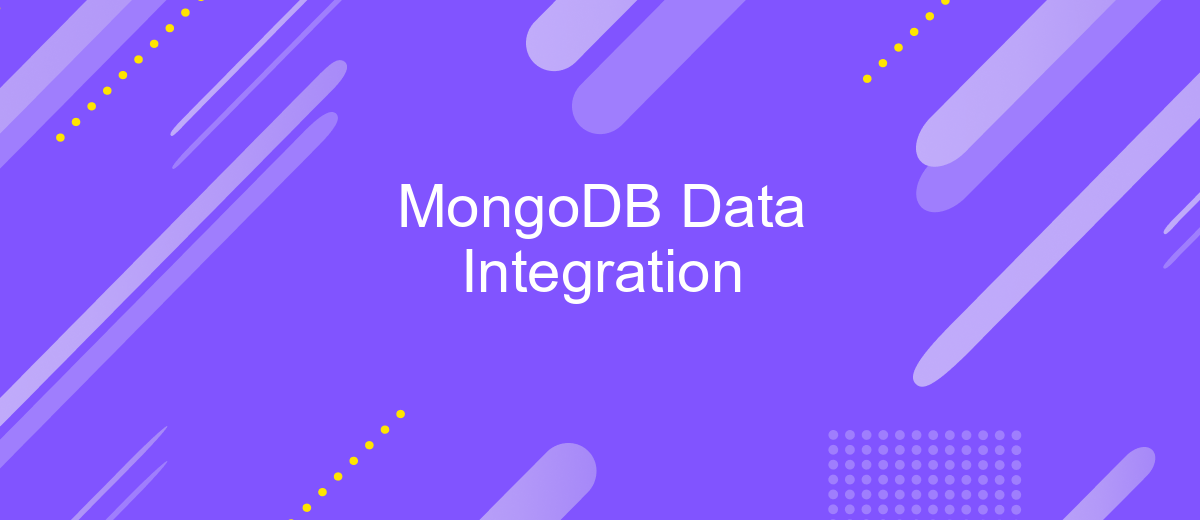MongoDB Data Integration
In today's data-driven world, integrating diverse data sources seamlessly is crucial for business success. MongoDB, a versatile NoSQL database, offers robust solutions for efficient data integration. This article explores the key strategies and tools for integrating MongoDB with various data systems, ensuring streamlined operations and enhanced data accessibility. Discover how MongoDB can transform your data integration processes and drive meaningful insights.
Introduction to MongoDB Data Integration
MongoDB is a powerful NoSQL database that offers flexibility and scalability for managing large datasets. Integrating MongoDB with other systems can enhance data workflows, enabling seamless data exchange and real-time analytics.
- Streamlining data between MongoDB and other databases
- Automating data synchronization across diverse platforms
- Facilitating real-time data processing and analytics
To achieve efficient MongoDB data integration, tools like ApiX-Drive can be invaluable. ApiX-Drive simplifies the integration process by providing a user-friendly interface for connecting MongoDB with various applications and services. This ensures that data flows smoothly, reducing the need for manual intervention and minimizing errors.
Challenges of MongoDB Data Integration

Integrating MongoDB with other data systems presents several challenges. One significant issue is data consistency, as MongoDB's schema-less nature can lead to discrepancies when synchronizing with structured databases. Ensuring that all systems reflect the same data state requires meticulous planning and robust error-handling mechanisms. Additionally, performance bottlenecks can arise when handling large volumes of data, necessitating efficient data processing and transfer methods to maintain system responsiveness.
Another challenge lies in the complexity of configuring and maintaining integrations. Tools like ApiX-Drive can simplify this process by providing an intuitive interface for setting up and managing data flows between MongoDB and other platforms. However, even with such tools, ensuring secure data transmission and compliance with data governance policies remains critical. Organizations must also account for potential downtime and data loss during integration processes, implementing backup and recovery strategies to mitigate risks. Overall, successful MongoDB data integration requires a comprehensive approach that addresses these multifaceted challenges.
Benefits of MongoDB Data Integration

Integrating MongoDB with other systems and applications offers numerous advantages that can significantly enhance data management and operational efficiency. MongoDB’s flexibility and scalability make it an ideal choice for businesses looking to streamline their data processes.
- Real-time Data Synchronization: MongoDB integration ensures that data is consistently updated across all platforms, providing real-time insights and reducing the risk of data discrepancies.
- Enhanced Data Accessibility: By integrating MongoDB with various applications, users can access and analyze data from multiple sources in a unified manner, leading to better decision-making.
- Scalability: MongoDB’s architecture supports horizontal scaling, allowing businesses to handle increasing data volumes without compromising performance.
- Cost Efficiency: Integrating MongoDB can reduce infrastructure costs by leveraging cloud services and optimizing resource usage.
- Seamless Integration: Tools like ApiX-Drive facilitate easy and quick integration of MongoDB with other platforms, ensuring smooth data flow and minimal downtime.
Overall, MongoDB data integration provides a robust framework for managing and utilizing data efficiently. Leveraging integration tools like ApiX-Drive can further simplify the process, allowing businesses to focus on growth and innovation without being bogged down by data management complexities.
Best Practices for MongoDB Data Integration

When integrating data with MongoDB, it is essential to follow best practices to ensure data integrity, performance, and scalability. One key aspect is to design your schema according to the specific requirements of your application, considering factors like data access patterns and relationships.
Another important practice is to use efficient indexing to optimize query performance. Proper indexing can significantly reduce query execution times and improve overall database performance. Additionally, always monitor and optimize your database performance using MongoDB’s built-in tools and third-party monitoring solutions.
- Design schema based on application needs
- Use efficient indexing
- Monitor and optimize database performance
- Leverage data integration tools like ApiX-Drive
- Ensure data security and compliance
Leveraging data integration tools like ApiX-Drive can streamline the process of connecting MongoDB with various applications and services. ApiX-Drive offers a user-friendly interface and robust features that simplify the setup and management of data integrations, ensuring seamless data flow and reducing the risk of errors. By following these best practices, you can achieve a reliable and efficient MongoDB data integration.


Case Studies and Examples of MongoDB Data Integration
One notable case study of MongoDB data integration involves a healthcare company that needed to consolidate data from various sources, including patient records, lab results, and appointment schedules. By leveraging MongoDB's flexible schema and robust querying capabilities, the company was able to create a unified view of patient data, significantly improving the efficiency of their operations. The integration process also involved the use of ApiX-Drive, a service that facilitated seamless data transfer between MongoDB and other healthcare systems, ensuring real-time updates and reducing the risk of data discrepancies.
Another example comes from the e-commerce sector, where a retailer integrated MongoDB with their existing ERP and CRM systems. The goal was to gain deeper insights into customer behavior and inventory management. Using MongoDB's scalability and performance, the retailer successfully managed large volumes of transaction data and customer interactions. ApiX-Drive played a crucial role in this integration by automating data synchronization between MongoDB and the retailer's other platforms, leading to more accurate demand forecasting and personalized marketing strategies.
FAQ
What is MongoDB Data Integration?
How can I integrate MongoDB with other data sources?
What are the common challenges in MongoDB Data Integration?
How can I automate MongoDB Data Integration?
Is it possible to integrate MongoDB with cloud services?
Time is the most valuable resource in today's business realities. By eliminating the routine from work processes, you will get more opportunities to implement the most daring plans and ideas. Choose – you can continue to waste time, money and nerves on inefficient solutions, or you can use ApiX-Drive, automating work processes and achieving results with minimal investment of money, effort and human resources.

